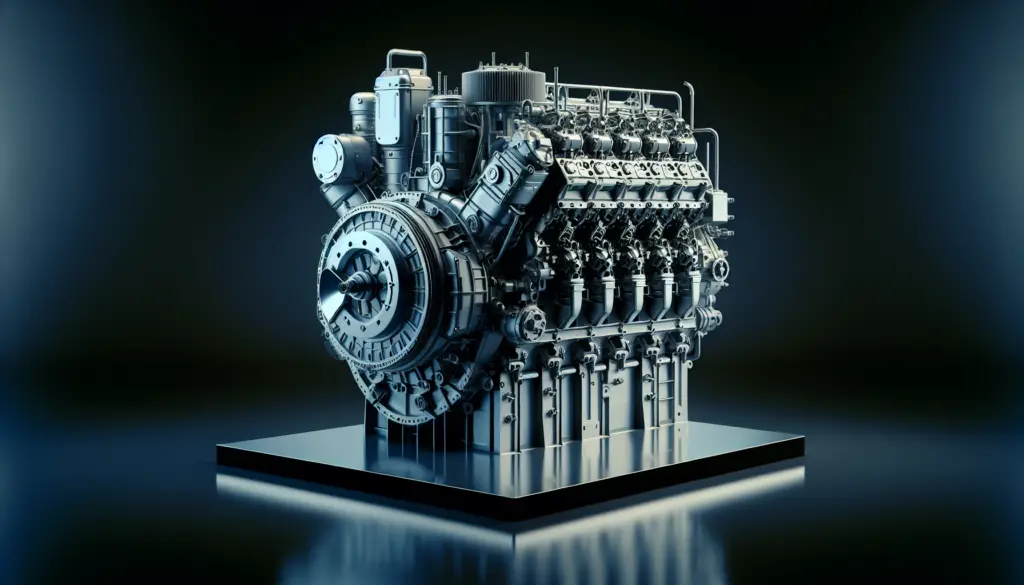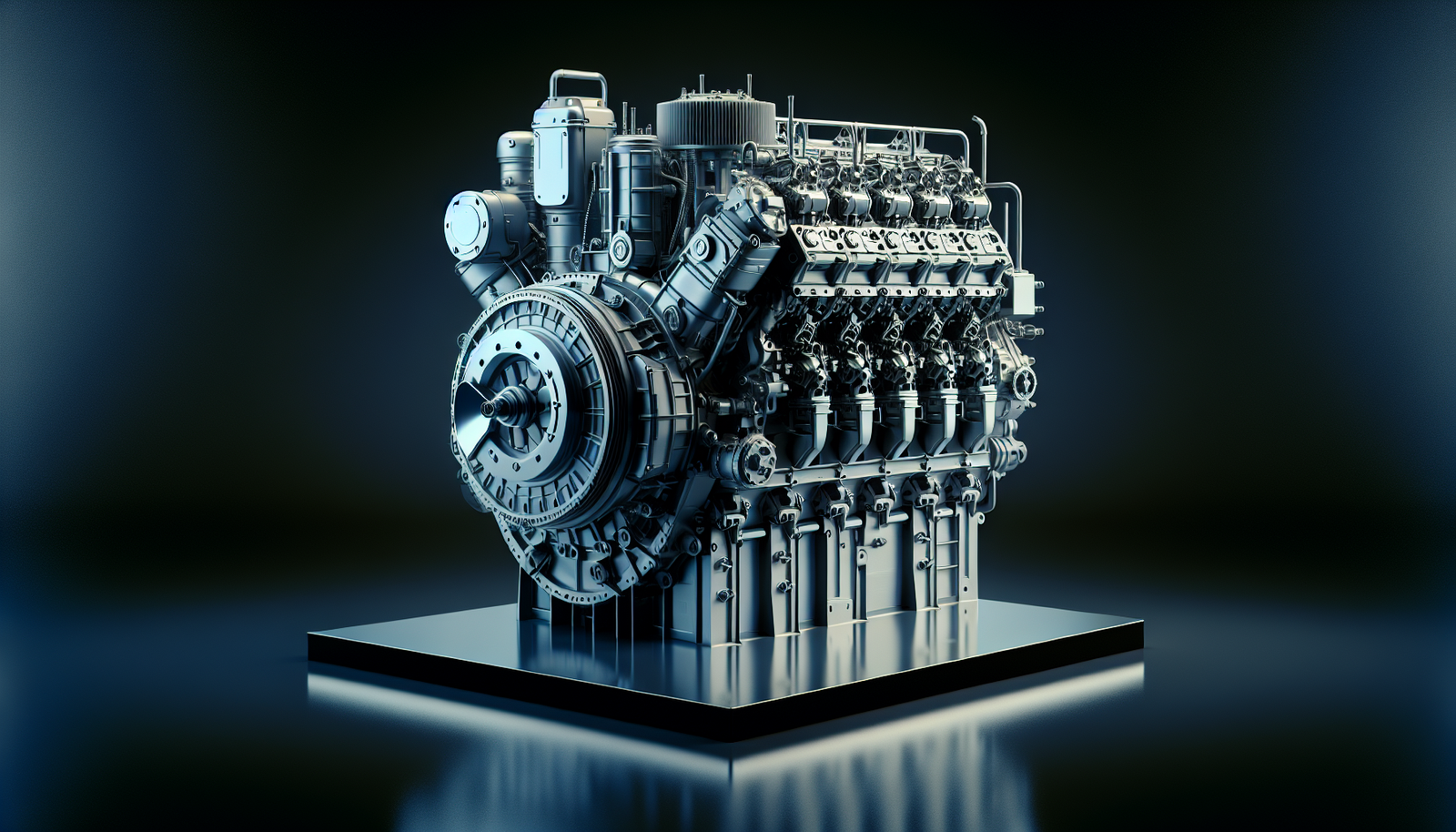Get ready to set sail in the exciting world of cutting-edge boat engine designs. This article will ignite your interest as it unfolds the latest trends in lightweight and compact boat engine designs. From the principles guiding these innovations to how they’re redefining speed and efficiency in maritime activities, it is surely a navigational chart that guides you through this dynamic ocean of information. So, get your sailor’s hat on because this voyage into the future of boating is about to get underway.

Innovation in Lightweight Materials
Innovation in lightweight materials is one of the most significant trends in the boat engine design industry. The race to create more efficient and sustainable engines has led to a significant shift towards the development and application of lighter materials.
Development of Advanced Composites
Advanced composites, particularly fiber-reinforced polymers, have become increasingly popular. These are made by incorporating high strength fibers into a plastic matrix, resulting in a material that offers unmatched strength-to-weight ratio. They are also resistant to corrosion and therefore have become a go-to material for manufacturing boat engines and other marine hardware.
Use of Aluminium and Alloys
You’ve probably noticed a rise in the use of aluminium and its alloys in boat engine design too. What is appealing about aluminium is its superb lightness and notable strength, not to mention its resistance to corrosion. The alloy versions of aluminum improve its overall strength and create an excellent material choice for boat engines.
Application of Lightweight Synthetic Materials
There’s also been an uptick in the application of lightweight synthetic materials. The use of such materials is beneficial since it allows for a significant reduction in weight without compromising structural integrity. Making engines lighter reduces the load on the boat, which in turn improves fuel economy, speed, and overall performance.
Improvement in Fuel Efficiency
Fuel efficiency is another significant focus, and that is being achieved through various technological advancements. Let’s break down a few of these in detail.
Implementation of Direct Fuel Injection Technology
First off, we have the implementation of direct fuel injection technology. This technology introduces fuel directly into the combustion chamber, resulting in a more efficient burn. This not only reduces fuel consumption but also lessens the emission of greenhouse gases.
Advancements in Turbocharging
Then, there’s the rise in turbocharging technologies. They increase engine efficiency by forcing extra air into the combustion chamber, allowing for more fuel to be burned and more work to be done per cycle. As a result, smaller, lightweight engines can perform as well as their larger counterparts.
Adoption of Variable Valve Timing
The adoption of variable valve timing (VVT) is also noteworthy. With VVT, valves can be opened or closed at different times based on engine speed and load. This ultimately optimizes engine performance and boosts fuel efficiency.
Focus on Compact Design
Today’s boat engines are not only becoming more lightweight, but they’re also getting smaller.
Adoption of Miniaturization Technology
The trend towards miniaturization has made it possible to reduce the size of engine parts without sacrificing their functionality or efficiency. Less internal friction, improved oil distribution and quicker heat dissipation are some benefits of this adoption.
Utilization of Optimization Algorithms
Optimization algorithms are being used in this sector as well. They are essential in reducing the size of the engine as they help engineers strike a balance between engine size, weight, performance, and efficiency.
Integration of Multi-Function Components
The integration of multi-function components is another tactic being employed. By combining several functions into a single component, engineers can reduce the overall number of parts in an engine, which saves space and decreases weight.

Electrification of Marine Engines
With the growing focus on sustainability, electrification of marine engines has become a key trend.
Increase in Battery-Powered Boat Engines
Battery-powered boat engines are becoming more common. They deliver almost silent operation, produce zero emissions, and require little maintenance. Not to mention, electric motors’ torque characteristics enhance (and simplify) any boating experience.
Development of Hybrid Boat Engines
On the other hand, advancements are also being made in hybrid boat engines, combining traditional piston engines with electric motors. The wonderful balance they achieve in terms of range, power, and eco-friendliness makes them an attractive choice.
Challenges in Electric Boat Engine Design
However, designing electric boat engines is not without its challenges. Power storage, weight impacts, quick depletion issues, and charging infrastructure are areas for ongoing research and development.
Digitization and Connectivity
As in many other sectors, boat engine design is also evolving in response to the digital age.
Integration of IoT in Boat Engines
Integration of Internet of Things (IoT) in boat engines stands at the forefront of these digital advancements. IoT can monitor engine performance in real-time, alerting owners to potential problems before they cause a breakdown.
Application of Predictive Maintenance
Predictive maintenance measures, often enabled by algorithms and IoT sensors, are being adopted. These can significantly reduce maintenance costs and downtime by predicting potential failures and scheduling necessary maintenance.
Development of Remote Monitoring Systems
Furthermore, remote monitoring systems have been developed, providing users with convenience and peace of mind. They allow the boat engine’s health to be monitored from anywhere in the world and can often automatically contact a service center if a problem arises.
Enhancements in Noise and Vibration Control
Enhancements are also being made in the field of noise and vibration control.
Use of Noise Isolation Materials
A major breakthrough is the use of advanced noise isolation materials. These materials can absorb or reflect sound waves, thus reducing the noise produced by the engine.
Designing for Vibration Damping
Understanding the need for a smoother ride, boat engine manufacturers are focusing on designing engines with vibration damping features. Vibration damping technology reduces vibrations, making boats more comfortable to ride and reducing wear and tear on the engine parts.
Application of Active Noise Control Technology
Moreover, active noise control technology is gaining popularity. Unlike passive noise control methods that involve sound-absorbing materials, active noise control uses something known as ‘anti-noise’ to counteract engine sound, effectively cancelling it out.
Adoption of Eco-Friendly Designs
As the world turns to greener solutions, boat engine manufacturers are no different.
Development of Low Emission Engines
Manufacturers are developing engines that produce fewer greenhouse gases. These low emission engines help to preserve marine habitats and combat global warming.
Utilization of Renewable Energy Sources
Renewable energy sources are also being harnessed. Solar and wind energy, in particular, are making it possible to charge electric and hybrid engines, offsetting the use of fossil fuels.
Influence of Environmental Regulations
Additionally, environmental regulations are influencing engine designs. Stricter emission standards are forcing manufacturers to think beyond efficiency and also consider the ecological impact of their designs.
Inclusion of Advanced Engine Control Systems
State-of-the-art control systems are integral to modern boat engine design.
Application of Artificial Intelligence
Artificial intelligence (AI) is making a big impact. AI algorithms can monitor and control various engine parameters to ensure optimal performance and take action in the event of a failure.
Use of Digital Twins in Design
The use of ‘digital twins’ is another trend worth noting. Digital twins are virtual models of the engine that can simulate how it performs under different conditions. This assists engineers in identifying potential design flaws before the manufacturing process.
Advancements in Engine Automation
Advancements in engine automation are also significant. Engines can now automatically adjust their performance based on real-time data from a variety of sensors, further improving fuel efficiency and engine life.
Evolution of Propulsion Technology
Great strides are being made in propulsion technology as well.
Growth of Podded Propulsion Systems
Podded propulsion systems, where the propeller is housed in a pod and can rotate 360 degrees, are gaining popularity because of their efficiency, manoeuvrability, and space-saving benefits.
Application of Water Jet Propulsion
water jet propulsion, which uses a jet of water to propel the boat, is being adopted due to its reliability, simplicity, and low noise and vibration levels.
Adoption of Magnetic Propulsion Mechanics
Even magnetic propulsion mechanics, which use magnetic fields to move the boat, are being explored. Though still in an experimental phase, they promise noiseless, efficient, and eco-friendly operations.
Future Trend Predictions in Boat Engine Design
Wondering what the future holds for boat engine design? Let’s take a peek!
Impact of Technological Advancements
Technological advancements will continue to shape the industry. From advancements in materials science, creating ever lighter and stronger materials, to improvements in AI, IoT, and green technologies, these advancements promise more efficient, quieter, and eco-friendly engines.
Role of Industry Regulations
Industry regulations will also play a pivotal role. As sustainable practices are encouraged, more eco-friendly technologies, such as hydrogen and biofuels, will likely come to the forefront.
Future Market Demands and Challenges
Finally, future market demands and challenges will also direct trends. Consumers are increasingly demanding boats that are eco-friendly, highly automated, and digitally connected. These demands, along with the technical challenges of designing such boat engines, will shape the future of the industry. In the end, the future looks quite exciting indeed!

